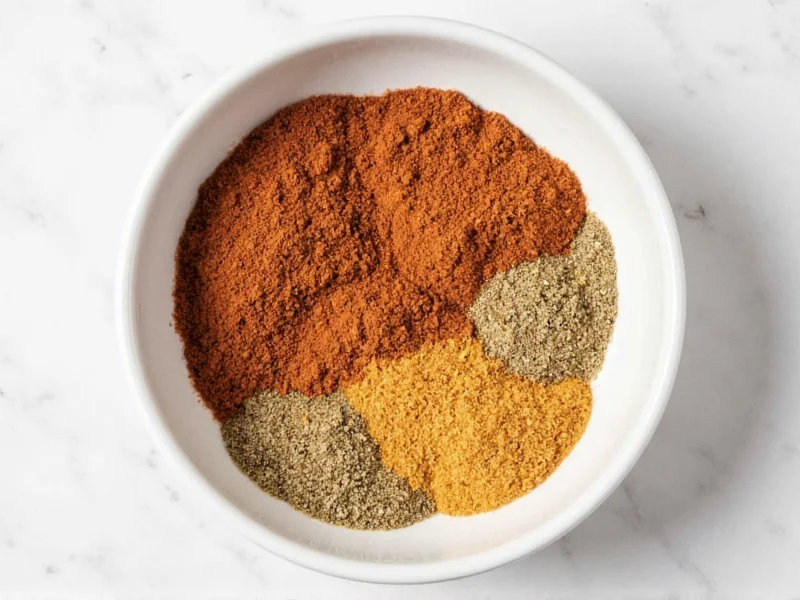The Story Behind Old Bay Seasoning
Old Bay Seasoning isn't just a spice blend—it's a cultural icon born in Baltimore during the 1930s. Originally created by German immigrant Gustav Brunn after he was barred from selling his spices to local crab houses, this distinctive blend became synonymous with Chesapeake Bay seafood culture. The name pays homage to the Old Bay Line, a passenger ship service that operated along the Atlantic coast. Unlike many commercial spice mixes, authentic Old Bay contains no MSG or artificial ingredients, relying instead on a balanced combination of warming spices that enhance rather than overpower seafood flavors.
Why Make Your Own Old Bay Seasoning
Creating your own Old Bay seasoning offers several advantages over store-bought versions. You control the freshness of ingredients, ensuring maximum flavor potency—spices lose their volatile oils and flavor compounds within 6 months of grinding. Homemade versions allow customization for dietary needs, such as reducing sodium by adjusting the celery salt quantity. You'll save approximately 40% compared to premium store brands while avoiding anti-caking agents and preservatives found in commercial blends. Most importantly, freshly mixed spices create a more vibrant, complex flavor profile that transforms ordinary seafood dishes into restaurant-quality creations.
Perfect Homemade Old Bay Seasoning Recipe
This meticulously tested recipe replicates the distinctive flavor balance of the original blend. The key to authenticity lies in precise measurements and proper ingredient selection—substitutions will alter the characteristic taste profile that makes Old Bay unique.
| Ingredient | Measurement | Critical Function |
|---|---|---|
| Paprika | 2 tablespoons | Provides base color and mild sweetness |
| Celery salt | 1 tablespoon | Essential savory backbone (do not substitute) |
| Black pepper | 1 teaspoon | Sharp bite and complexity |
| Cayenne pepper | 1 teaspoon | Controlled heat element |
| Dry mustard | 1 teaspoon | Sharp tang that cuts through richness |
| Ground ginger | 1 teaspoon | Warmth and subtle sweetness |
| Ground bay leaves | 1 teaspoon | Distinctive herbal note (critical ingredient) |
| Ground cardamom | 1/2 teaspoon | Floral complexity in background |
Step-by-Step Preparation Guide
Follow these precise steps to create professional-quality Old Bay seasoning:
- Prepare your workspace: Use a clean, dry glass bowl and measuring spoons. Ensure all equipment is completely moisture-free.
- Measure ingredients precisely: Use leveled measuring spoons—do not pack spices. Celery salt measurement is particularly critical to authentic flavor.
- Combine dry ingredients: Add paprika first, followed by celery salt, then remaining spices in order of quantity (largest amounts first).
- Mix thoroughly: Whisk for 2 full minutes to ensure even distribution. Incomplete mixing creates inconsistent flavor pockets.
- Rest the blend: Cover and let sit for 24 hours before use. This allows flavors to meld and creates more balanced taste.
- Store properly: Transfer to an airtight glass container away from light and heat sources.
Ingredient Selection Tips for Authentic Flavor
The quality of your ingredients directly impacts the final product. For paprika, select Hungarian sweet paprika rather than smoked varieties. Celery salt must be pure celery seed and salt—avoid blends with additional spices. Freshly grind your bay leaves using a dedicated coffee grinder for optimal flavor; pre-ground bay leaves lose their distinctive aroma within weeks. When measuring cayenne, use a light hand—this ingredient should provide background warmth rather than dominant heat. Cardamom makes a subtle contribution, so use freshly ground pods rather than pre-ground powder for the most authentic flavor profile.
Storage and Shelf Life Guidelines
Proper storage maintains your homemade Old Bay seasoning's vibrant flavor for up to 6 months. Use amber glass containers with tight-sealing lids to protect from light and moisture. Store in a cool, dark cupboard away from your stove or other heat sources. Never keep spice blends in refrigerator doors where temperature fluctuations occur. Check freshness by rubbing a small amount between your fingers—if the aroma is weak or musty, it's time to make a new batch. For extended storage, divide your blend into smaller portions and freeze what you won't use within 3 months.
Culinary Applications Beyond Seafood
While traditionally used for crab boils and shrimp, this versatile blend enhances numerous dishes. Toss roasted potatoes with 1 teaspoon per pound before baking for crispy, flavorful results. Mix 2 tablespoons into mayonnaise for a signature remoulade sauce. Sprinkle over popcorn for an addictive snack. Add to Bloody Mary mix for authentic Maryland-style cocktails. Incorporate into burger patties (1 tablespoon per pound of meat) for unexpected depth. Use as a dry rub for roasted chicken wings—apply generously and let sit for 30 minutes before cooking. The blend's balanced profile works particularly well with egg dishes, adding complexity to frittatas and quiches.
Troubleshooting Common Issues
If your homemade blend tastes too salty, you've likely used too much celery salt—reduce to 2 teaspoons next time. For insufficient heat, increase cayenne by 1/4 teaspoon increments until desired warmth is achieved. If the flavor seems flat, check your bay leaves; stale bay produces bitter notes. When the blend lacks complexity, verify your cardamom is fresh—this subtle ingredient provides crucial floral notes. For color that's too pale, ensure you're using vibrant Hungarian paprika rather than generic supermarket brands. Remember that freshly made blends need 24 hours to develop full flavor, so taste after this resting period rather than immediately.
Regional Variations and Dietary Adaptations
While the classic recipe remains unchanged, thoughtful modifications accommodate different preferences. For reduced sodium versions, replace half the celery salt with equal parts celery seed and kosher salt. Vegetarians should verify no animal-derived anti-caking agents are in their salt. Gluten-free cooks need only ensure all spices are certified gluten-free. Some Maryland chefs add 1/4 teaspoon allspice for holiday crab boils, while Southern variations sometimes include a pinch of smoked paprika. For those avoiding nightshades, substitute sweet paprika with 1 tablespoon annatto powder plus 1 tablespoon turmeric, though this creates a noticeably different flavor profile.











 浙公网安备
33010002000092号
浙公网安备
33010002000092号 浙B2-20120091-4
浙B2-20120091-4